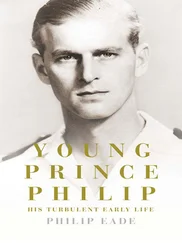The hunting culture was politicised by Göring to serve as a code of honour, which enforced the operational dogma in Białowieźa. Senior hunt officials perpetrated genocide from their first orders for extermination, which continued for the duration of the occupation. The hunter’s mission was set by Göring, but their actions at the local level were defined by individual responsibility. Beatrice Heuser recommended pursuing a deeper examination of hunting and war through Barbara Ehrenreich’s Blood Rites. 30This ground-breaking interpretation of war and hunting led to further reading. In particular, Simon Harrison touched on much darker kinds of hunting and human behaviour in war. 31Under the Nazis, the German hunt turned into an elitist social class. One observation with hindsight, these findings could have been contextualized within Michel Foucault’s theories of power and discipline. An etiquette of power shaped the mannerisms of the hunters, especially in their relations to non-hunters. The hunt’s social elitism, in the absence of monarchy and aristocracy, was directed towards the ritualisation of professionalism. Foucault’s doctors and patients could be almost role-reversed into the hunters and non-hunters. These threads formed an image of the naked display of power and professionalism, as depicted in the symbolism of the ‘hunter-warrior’ of Luftwaffe propaganda, labouring with genocide, in the wilderness arena of Białowieźa. 32
The necessity to conduct field research in Białowieźa came from reading Riding The Retreat. In the preface, Holmes discussed his ‘growing reservations with what we might term ‘arrows on maps’ military history’ and being drawn to the ‘microterrain, that tiny detail of ground and vegetation that means so much to men in battle.’ 33Holmes had previously engaged with the history of memory through the anecdotes of soldiers. Both Firing Line (1985) and Dusty Warriors (2006) were influenced by memory, the ‘other soldier’ in the case of the former, and himself in the latter as an observer on the ground. Holmes listened to veterans after the Falklands War in 1983, but in 2005 gave an impression of being on the ground in Iraqi. This transformation in Holmes’ writing, from listener to witness, was a lesson in historical change, that went largely unnoticed in reviews. A further contemporary impression of the dichotomies of military culture came from The Junior Officers’ Reading Club (2010). The author warned the readers that incidents in war are not recalled in exact detail. Hennessey reflected upon a war from yet another standpoint of soldiers’ responses during a hostile occupation. There are always doubts over the accuracy of reports and this was more prominent in wartime where accounts were often accepted at face value. 34There was one important study that could not be incorporated into the research findings. Thomas Kühne has written extensively and profoundly about soldiers within the context of identity and comradeship. 35Repeated attempts to incorporate his ideas failed due to fundamental gaps in the evidence. This was primarily due to the lack of personal evidence of the Luftwaffe soldiers, their shortened periods of service together, and the absence of any identifiable primary groups. In the final version, it was a collective of Hosbawm, Holmes, and Hennessey that pointed the way. The consistent reference to documentary evidence, but the caution of the unreliability of the bureaucracy underpinning that evidence was a constant finding in my research.
At the heart of this book is the German soldier—the Landser—the common soldier. The motivation behind this book was to understand who they were and how they were—in effect, a socio-cultural military history. Scholars and writers have reflected on who they were, why they fought for Hitler, and remained faithful to the bitter end; but the soldiers themselves have remained aloof, distant, and impenetrable. During the war, British military intelligence examined German fighting traits through PoW interrogations. 36US Army intelligence carried the subject into a wider analysis of military methods and innovation. 37After the war, civil-military relations scholars applied the interrogation reports to a ‘cohesion and disintegration’ thesis (1947). The authors identified a ‘primary group’ concept, which claimed to hold the fighting or combat troops together. The article also cited an interrogation report of a captured German NCO about the political opinions of his men—the reply was instructive:
When you ask such a question, I realise well that you have no idea of what makes a soldier fight. The soldiers lie in their holes and are happy if they live through the next day. If we think at all, it’s about the end of the war and then home. 38
The timeless words of veterans’ attitudes from all armies. The article was widely read but with a limited appeal. A general perception of the German soldier remained of the well trained and highly disciplined soldier. Nazism had socialised the soldiery, which tightly bound the myths of the Landser during the war. In the postwar age, Germans grappled with the uncomfortable realities of the war. In the 1950s, foreign observations, like that of The Scourge of the Swastika, were directed at German society struggling to come to terms with the war and Nazism. 39From the 1980s, scholarship began to follow an empirical/analytical path, while popular genres embellished uncontested German veterans’ anecdotes which has continued to this day. 40In 1983, a study compared the respective performances of the German Army and US Army during the war. 41Omer Bartov published his research of Hitler’s soldiers, which adapted the ‘primary group’ thesis to German fighting formations. 42I was fortunate to be placed in London at a time when several leading scholars discussed their ideas about common soldiers and war. Following a London University German history seminar in May 1997, there was a discussion with Bartov. He believed there was a shortfall of records, in particular the German NCOs, thereby reducing the prospect for serious research. 43In a subsequent conversation with Joanna Bourke, following a lecture at the Wiener Library, she argued men killing in war, stripped of military identity and political ideology, could be the basis for a comparative study. 44Bourke’s impressions closely matched the acts of men in Białowieźa. However, the resort to public killings by the Germans represented extreme exemplary violence, which placed them in a separate category of Second World War belligerents. 45This basic idea for comparative analysis, however, never entirely disappeared.
The Landser, as portrayed in this book, emerged from scholarly engagements with German colleagues. Following discussions with the late Professor Wilhem Diest and Professor Stig Förster at conferences, a different path of research was set emphasizing the interactions of social class. 46An impression drawn from conversations with German veterans about their impressions of ‘combat’, ‘fire-fights’, and their sense of gratification from memories of being soldiers. 47In lengthy discussions with Professor Jochen Böhler, about German soldiers and their private letters, a richer impression of the Landser emerged. The culmination of the research identified the Luftwaffe soldiers as either reservists (mostly officers with civilian professions) or conscripts (mostly ORs from the lower classes). The only professional soldiers were the senior NCOs (no more than six), and none of their papers has survived. If these men were judged by their careers, they cut a cross-section of Third Reich society: farmhands, industrial workers, clerks, low-skilled technicians, tradesmen, trainees, beat police, and junior civil servants. They were a rag-tag collection of men mustered into small units. They did not represent the cream of the crop, and even Göring held little sway over manpower selection at the point of recruitment. They were poorly organized and were turned into cannon-fodder—even the non de plume ‘the poor bloody infantry’ did not describe their circumstances. They were not particularly well-armed; their first weapons were captured enemy booty from the Great War. Neither unit colours and class identity, nor duty and discipline, explained their motivations. They performed occupation security as dedicated perpetrators, but then gave a reasonable account of themselves as German soldiers in retreat. The fog of war.
Читать дальше












